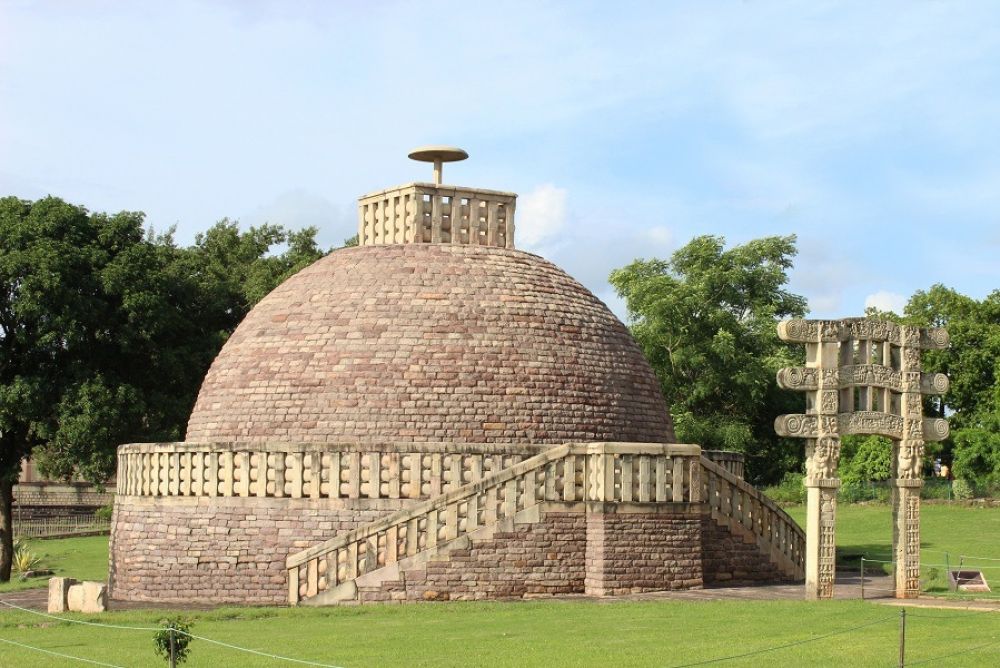

The Sanchi Stupa No. 3 is one of the numerous Buddhist monuments situated at Sanchi, in the Indian state of Madhya Pradesh. Sanchi is universally renowned for its stupas, monasteries, temples, and pillars dating from the 3rd century BCE to the 12th century CE. The Great Stupa, also known as Stupa No. 1, is the oldest and most prominent, but Stupa No. 3 holds its own significance and attracts many visitors.
Stupa No. 3 is notably smaller than the Great Stupa, but it has its own unique features, including an umbrella-like structure crowning its mound, which symbolizes high rank and is considered an object of veneration. It is believed that this stupa houses the relics of Maha Katyayana, one of the chief disciples of Buddha. The Stupa was originally built during the time of Ashoka, who was a great Mauryan Emperor and later embellished during the Sunga period with a decorative railing and other ornaments.
Tourism in Sanchi has grown around the historical and spiritual significance of the site. The stupas of Sanchi were rediscovered in the year 1818 by General Taylor, a British officer, after which it slowly began gaining attention from archaeologists and historians across the world.
After India gained independence in 1947, Sanchi became an important destination for cultural heritage tourism. The Archaeological Survey of India (ASI) undertook the task of restoring the stupas and establishing a museum nearby. Over time, more amenities were developed, including better access roads, accommodations, and visitor centers to cater to an increasing number of tourists.
In 1989, the stupas of Sanchi were designated a UNESCO World Heritage Site, which significantly boosted international tourism. Visitors from all over the world started arriving to admire the ancient monuments, the carved gateways, and the Buddha's teachings inscribed on the pillars and walls of the structure.
Recent trends in tourism at Sanchi have focused on sustainable and responsible practices that aim to preserve the historic site while promoting education and appreciation of Buddhist culture.
Educational Tourism: Many universities and Buddhist groups now organize educational tours to Sanchi, enabling students and practitioners to gain a deeper understanding of Buddhist philosophy, art, and history.
Virtual Reality (VR) Experiences: Technological advancements have made it possible to explore Sanchi virtually, which has become increasingly popular amidst travel restrictions due to global health concerns.
Eco-Friendly Initiatives: Local authorities and tour operators are adopting eco-friendly practices such as limiting pollution and improving waste management to sustain the sanctity of the area.
Cultural Festivals: To celebrate and share the heritage of Sanchi, cultural festivals and events are held periodically, bringing traditional dance, music, and crafts to the forefront of tourism.
Tourism at Sanchi continues to thrive, with respect to conserving its historical treasures and catering to the intellectual and spiritual nourishment of visitors from across the world. Sanchi Stupa No. 3 remains an integral part of this ancient ensemble, offering insights into the rich history and profound teachings of Buddhism.